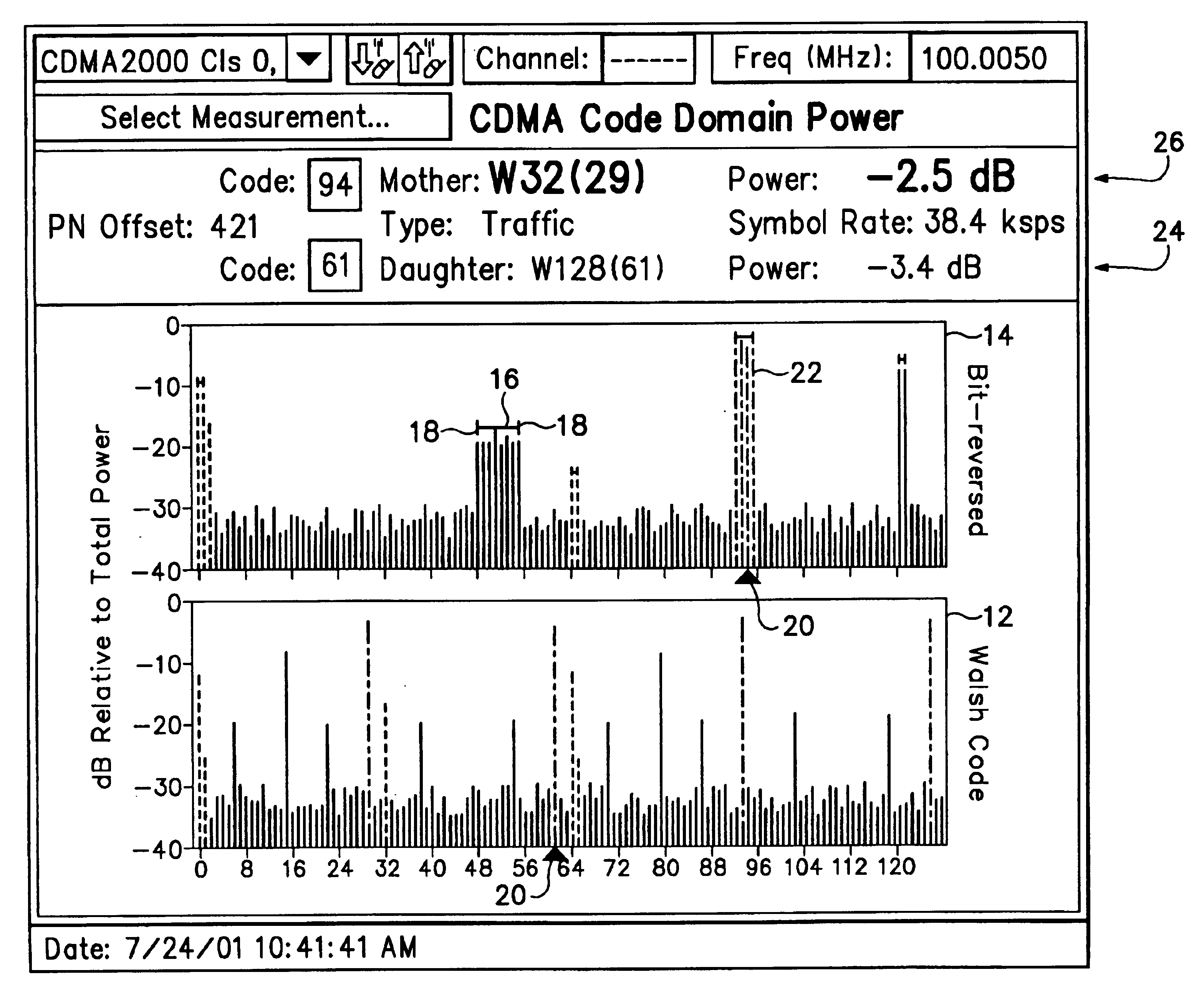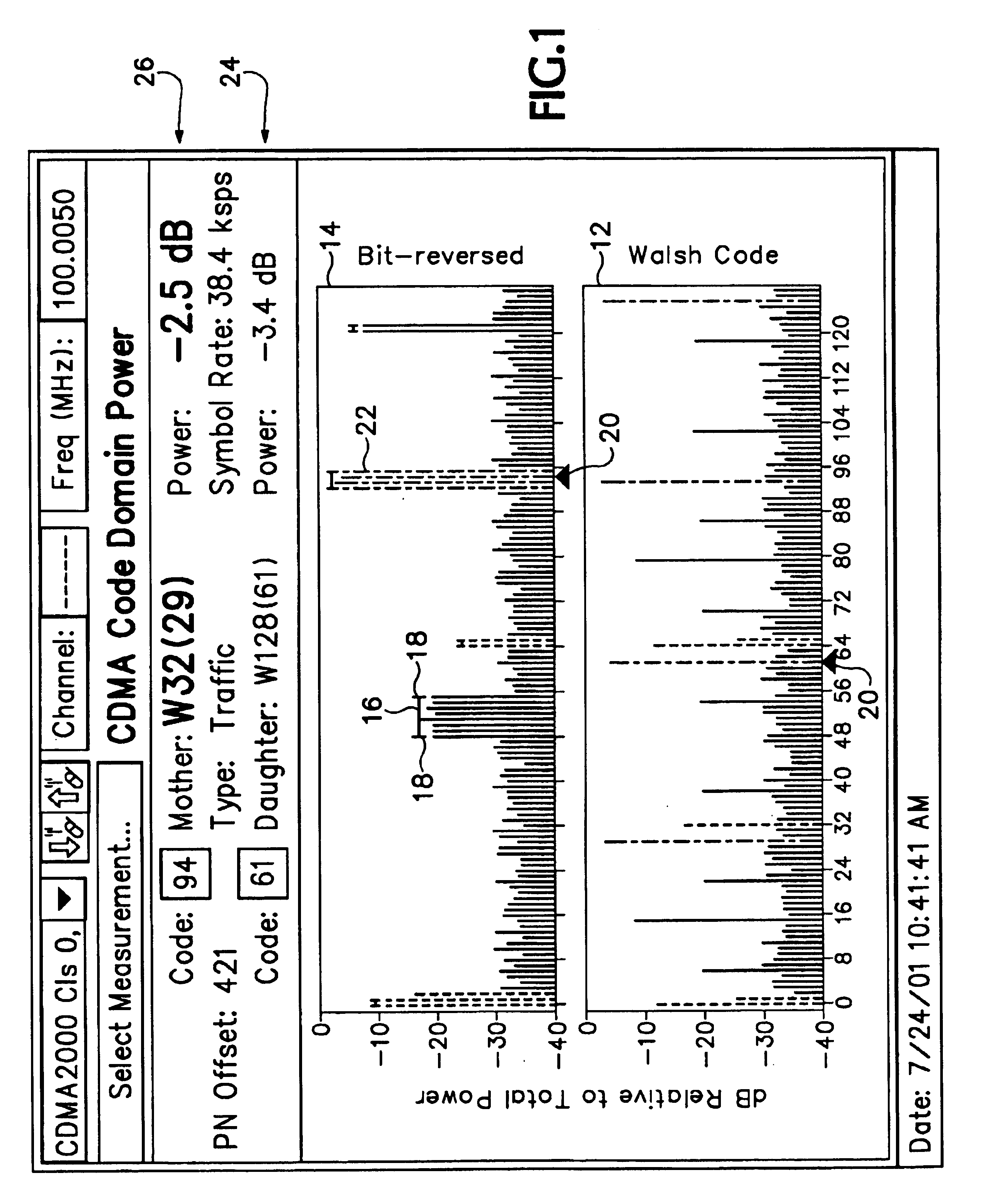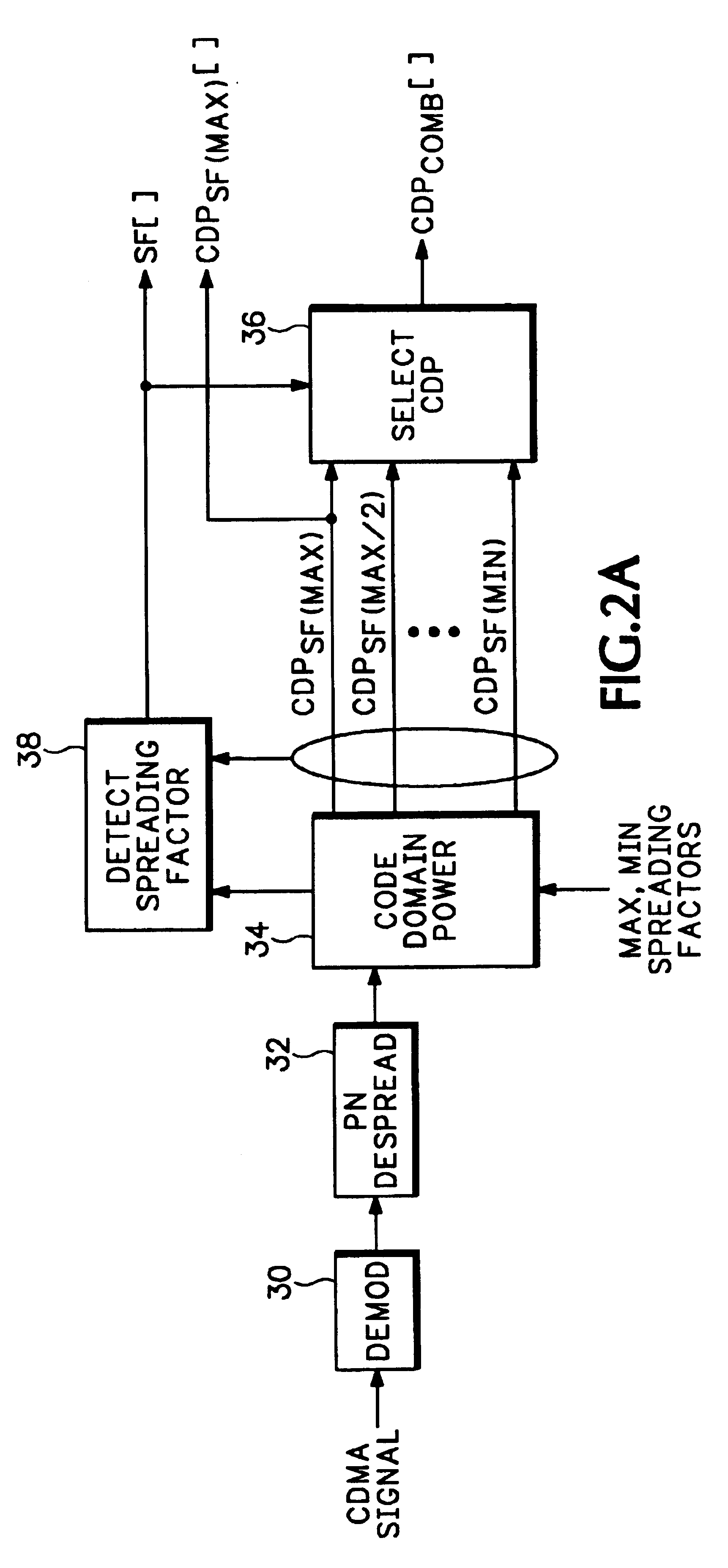Display of code power levels and relationships of multiple spreading factor orthogonal codes in a CDMA signal
a technology of code power level and relationship, applied in the field of code division multiple access (cdma) signal analysis, can solve the problems of complicated display of cdp and difficulty in interpreting the results of cdp calculations
- Summary
- Abstract
- Description
- Claims
- Application Information
AI Technical Summary
Problems solved by technology
Method used
Image
Examples
Embodiment Construction
Referring now to FIG. 1 two code graphs 12, 14 are shown, each similar to a traditional code domain power (CDP) display for single spreading factor (SF) signals. For signals using Walsh or similar codes for orthogonal code spreading, such as cdma2000, both code graphs 12, 14 are used. For systems using Orthogonal Variable Spreading Factor (OVSF) codes, such as WCDMA, only one traditional code graph 12 is needed. In both cases one code graph 12 is the traditional plot of CDP for all codes at the maximum spreading factor of the system using linear code index order. However with Walsh code spreading this graph 12, referred to as a Walsh Code graph for cdma2000, shows lower spreading factor codes split into multiple sub-codes at various spacings. Then the other code graph 14, if needed because the sub-codes are not contiguous in the first code graph 12 as in cdma2000, shows the same CDP information but with the order of display of code power values reordered by “bit-reversing” the code ...
PUM
 Login to View More
Login to View More Abstract
Description
Claims
Application Information
 Login to View More
Login to View More - R&D
- Intellectual Property
- Life Sciences
- Materials
- Tech Scout
- Unparalleled Data Quality
- Higher Quality Content
- 60% Fewer Hallucinations
Browse by: Latest US Patents, China's latest patents, Technical Efficacy Thesaurus, Application Domain, Technology Topic, Popular Technical Reports.
© 2025 PatSnap. All rights reserved.Legal|Privacy policy|Modern Slavery Act Transparency Statement|Sitemap|About US| Contact US: help@patsnap.com



